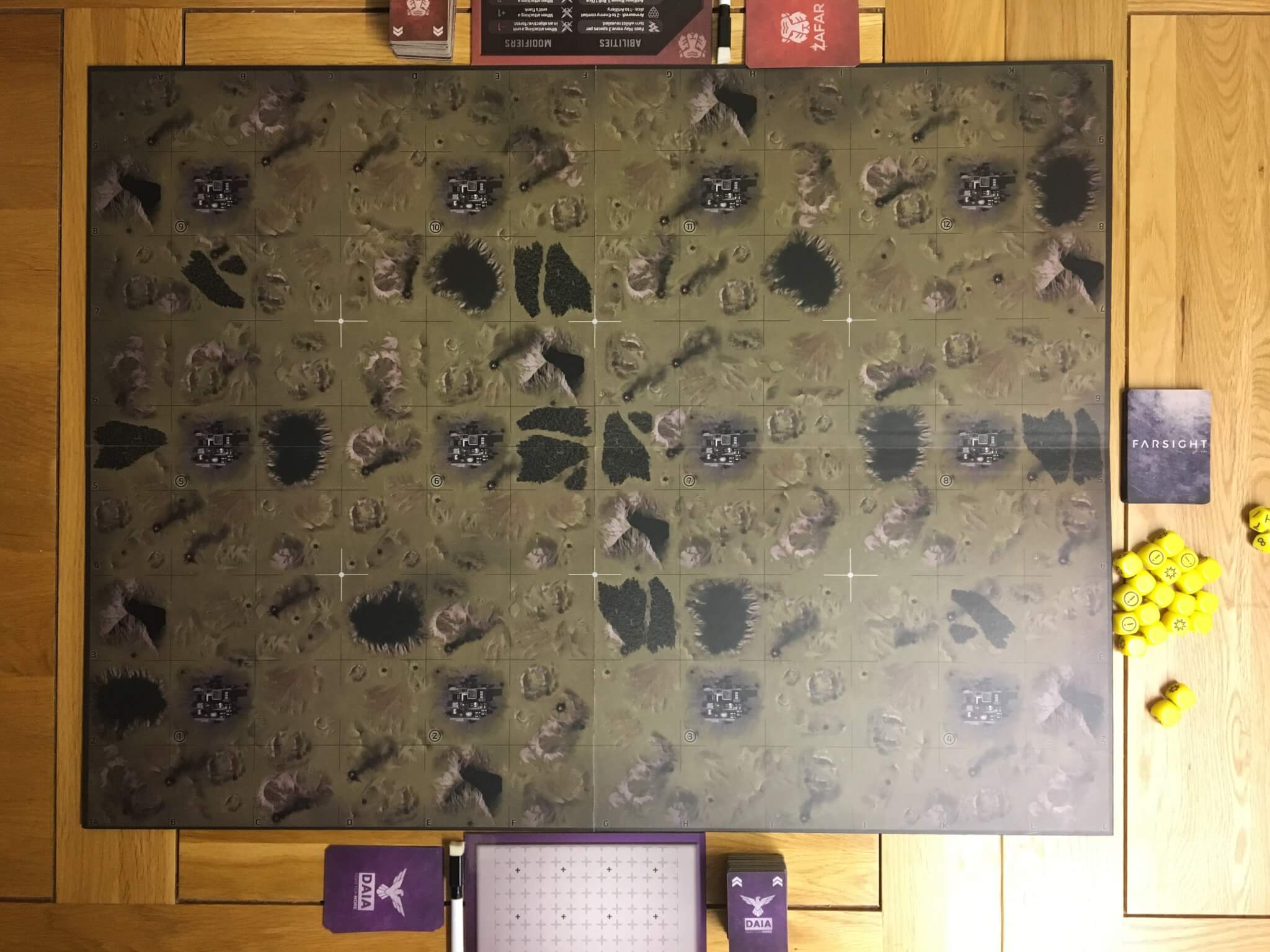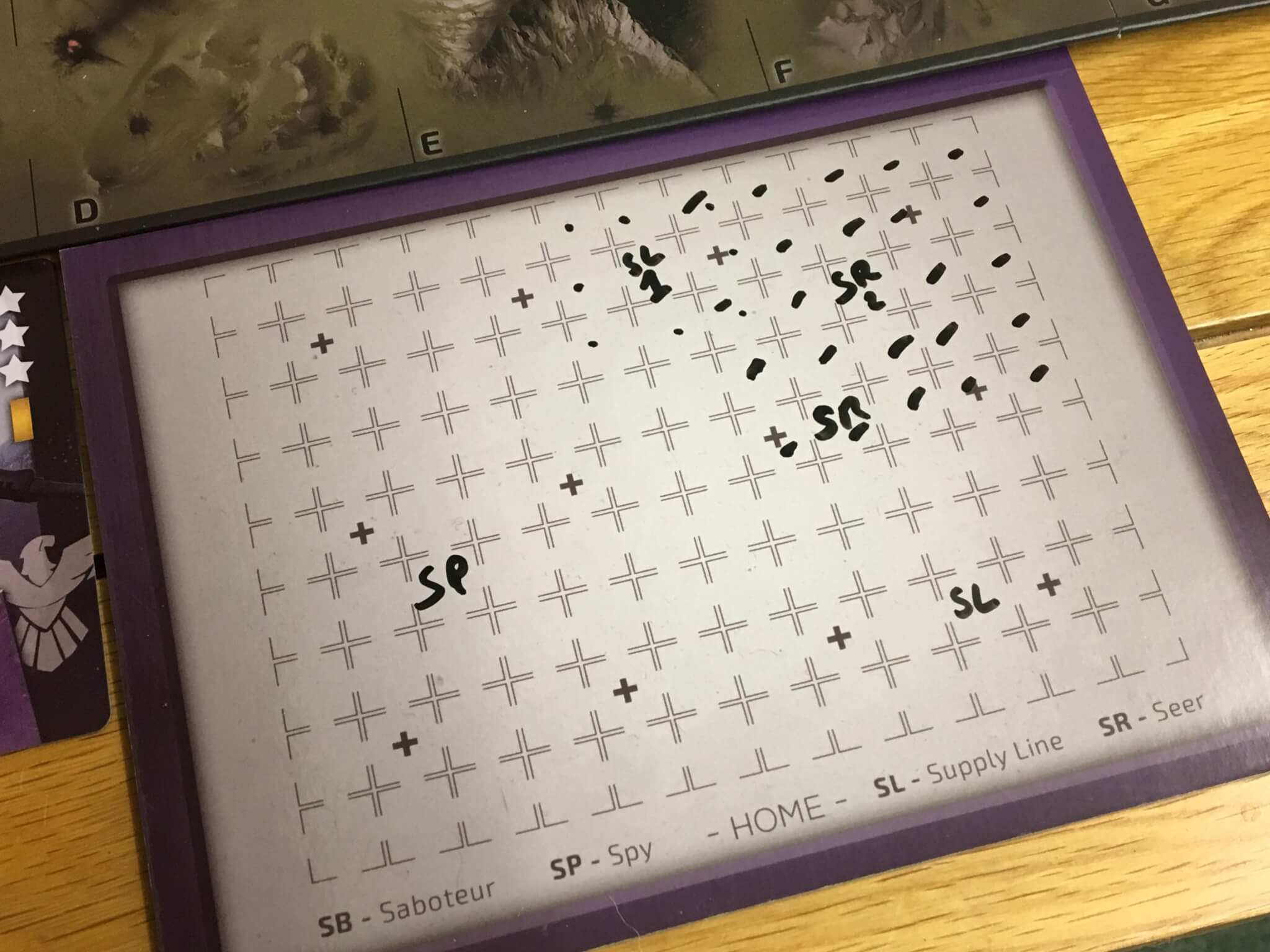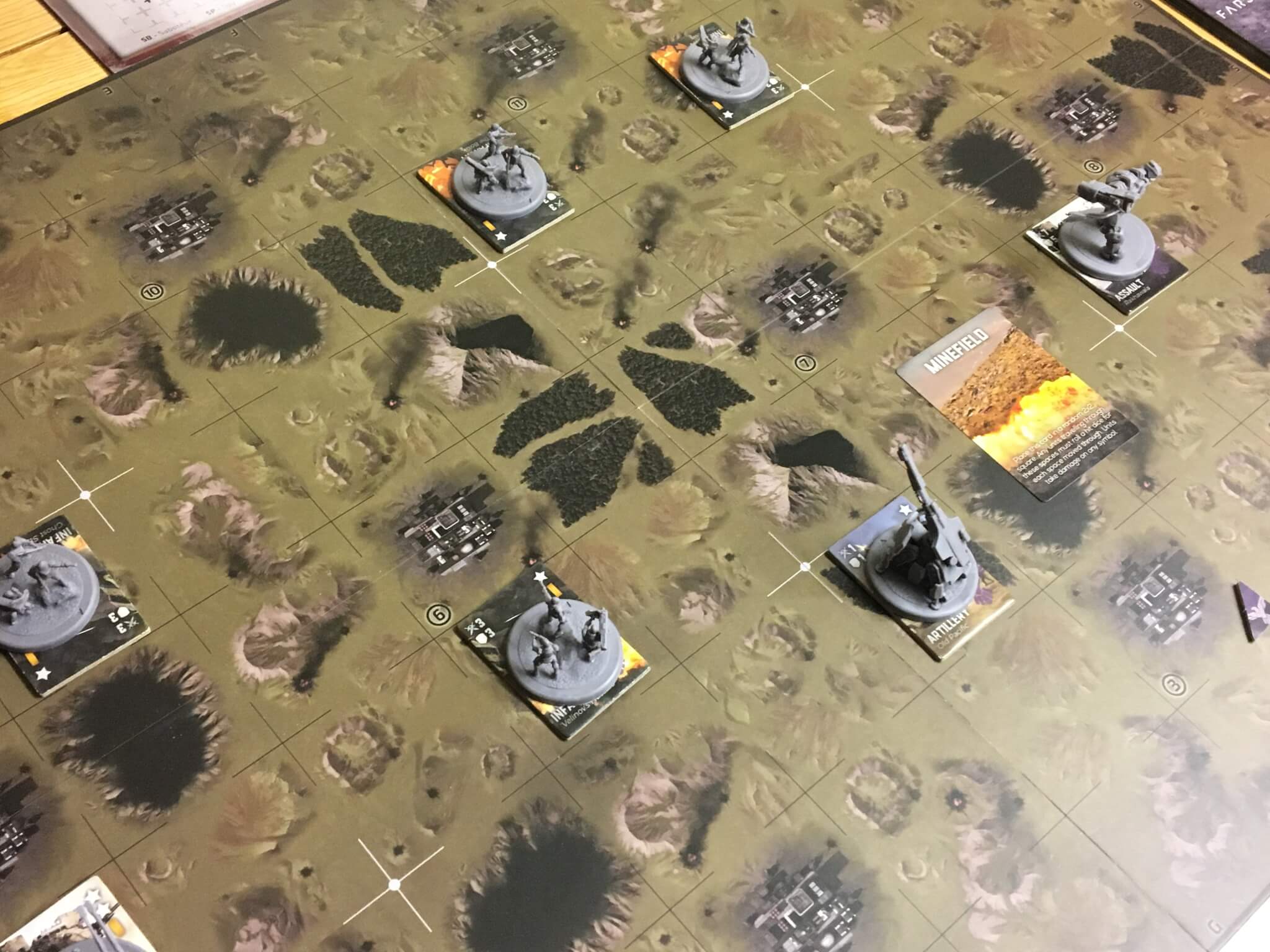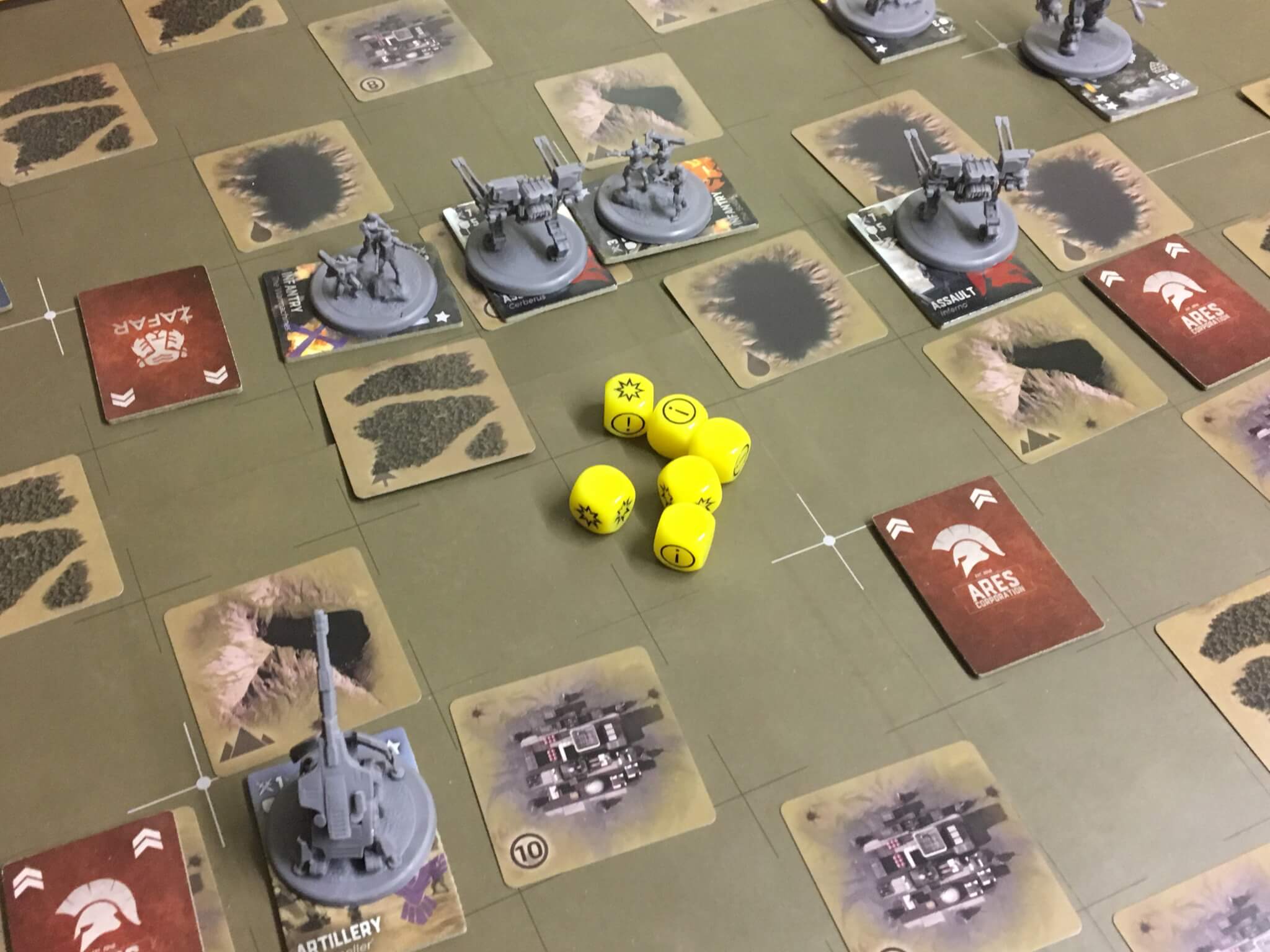Farsight — the long and short of it
I can’t remember where I first read it, but one line from the lore surrounding Games Workshop’s Warhammer 40,000 has always stuck with me; “in the grim darkness of the future, there is only war” it forecasts. From the moment I laid eyes on Braincrack Games’ Farsight in action, I was immediately reminded of this quote, and as I punched mech, artillery and marine tokens from thick punchboards, I knew I was going to be in for a fight.
Farsight is both a war game and a board game. In particular, it is clearly designed to bridge the gap between the two for players who are curious about making the leap over to the heavier chit and counter based play that wargames are famous for. In the base version of Farsight, the pieces are all represented by tokens, but the War Chest expansion (which we’ve kindly been sent) can be purchased to supplement the base game.
I’ll be honest in saying that your first few games of Farsight are likely to underwhelm. The manual is basic, offering instructions that are brief and functional, but written in such a way that it leaves certain things open to interpretation. I’ll talk more about that later, but for now you should know that if you were to set up your first game and sit there thinking “am I really just looking at this board, a handful of cards and a stack of tokens?” then don’t fear.

Farsight is really that straightforward to prepare for your first game. Each side, depending on whether you’re playing a two, three or four player game, will have a predefined stack of unit tokens and a few cards. Coloured insignia on each of these (both cards and tokens) indicate which ones to use depending on the setup, and it’s all pretty simple to follow. The board itself is double-sided, and you’ll probably use the side with terrain printed on it for your first game.
Curiously, players will also be given a wipe clean board that represents a miniature version of the main map, as well as a pen with an eraser on the end. This is where Farsight shows its most unique feature, which is that any unit depicted on a card (known as specialists) are deployed into secret locations on your own wipe clean board. These specialists have unique rules that affect the larger units on the battlefield, but can also be targeted by another off-board unit (that doesn’t appear anywhere in game) called The Assassin.
If all of this already seems a little janky and overwhelming, that’s because it does seem so at first. What’s more, you’ll also have to contend with the idea that unit deployment happens turn by turn. Battles begin small (unless you house rule something different) and the token based battlefield units creep onto the field in ones and twos (but only ones, unless the player has deployed a Supply Line specialist).

On the base map, it’s almost a foregone conclusion that each side will capture the first four bases that sit across the side they’ll be deploying from, and the win condition of most games is to capture and hold eight bases in total for one whole turn. The battle really begins when the players meet in the centre of the board, but the deployment of units and use of specialists in the meantime is key in every battle, giving Farsight a very unique playstyle.
So, bear in mind that your board state is expanding with face down tokens that you can choose and deploy as you wish, but which your opponent can’t see. You’re own wipe clean board will also fill up with markings as you deploy specialists and as you hone in on enemy units. The specialist units include The Seer (who can affect the events drawn at the beginning of each turn,) The Spy, who can reveal enemy units and the supply line, who allows an additional battlefield unit to be brought in each turn.
The most interesting of these specialists is The Assassin that I mentioned earlier, who can hunt enemy specialists. To do this, the player chooses a coordinate on the map and states a specialist type, and at this point, the enemy player must respond by stating how many spaces a specialist of the named kind is (if there is one) from the target space.

If the target space is chosen, the specialist is killed and wiped clean from the board. One thing you’ll notice here is that the wipe clean board I’m talking about doesn’t have any grid references, which is, frankly, a significant oversight. With that said, the ability to triangulate enemy unit positions on this board is a fun, unique aspect (that feels like Battleships) happening alongside the more traditional war game taking place on the main board.
As units are revealed — either because they fire (in the case of artillery) are revealed (either voluntarily, or as the result of a spy spotting them) or when they enter combat — the board begins to look more appealing. With only the base game tokens, the presence of the quality, albeit dark, artwork begins to improve things, but when the War Chest expansion is in play, this is when you’ll start moving miniatures onto the board. It does feel counterintuitive to have a huge box of miniatures sitting aside and only being used infrequently, but where Farsight is concerned, the ability to bluff with units is critical.
Combat is resolved with dice (unless a diceless variant is used) based on which units are fighting. Each unit has a base attack and defence value that determines their starting dice, which is then modified for the circumstances. Some of these adjustments are simple, but others seem to compound in a way that the manual makes confusing. For example, armoured units gain a defence bonus (in addition to having lots of defence dice) and units attacking armoured units lose two attack dice. I struggled to work out if these things were supposed to stack, honestly, and I’ve tried the game both ways.

When the dice are rolled, the players are more or less comparing hits to determine damage, and each unit (regardless of its type) has three hit points, meaning that when the third hit is taken, the unit is destroyed. It is possible for several units to fight a single enemy, and there are rules (also resulting in dice modifiers) for things like flanking and attacking in the rear.
Now, I mentioned earlier that these games can be a little underwhelming early on, and that’s mainly because a lot of Farsight is just so unusual. You’ve got this slow deployment, the face down tokens (and no miniatures), the need to capture these flat, dull bases and then all those specialist units to deal with. None of this is hugely problematic to get to grips with, but the thing with most modern board games is that they show you everything as quickly as possible to produce that wow factor.
Farsight does the exact opposite. It shows you nothing, restricts your access to the most interesting features — like the miniatures and the customised armies. It teases you with its weakest and most vanilla form, before slowly revealing that it is actually quite an interesting, strategic and nuanced experience. Sure, it’s a dice based combat game with elements of bluffing and deception, but it also rewards both strategic planning and short-term tactical play.

Playing Farsight is pretty much everything you’d expect from a game that is designed to offer a light war game experience to board game players. The basic setup is restricted deliberately to offer accessibility, but once you have a few games under your belt, you can begin to mix things up by creating your own armies, then flipping the board and using the custom scenery to deliver a bespoke experience based around missions of your own invention.
Farsight is not an attractive game, and it definitely has some limitations. The manual is not the best, but what it does do, is get you up and running very quickly, then introduces a few more complex rules when you want them — rather than forcing players to wade through every detail from the outset. The dice combat is fun, with modifiers that generally make sense in the context of reflecting the onboard situation in the specific combat you’re fighting, whilst the offboard specialist units add an element of unique excitement.
Overall, I’d recommend Farsight as a game that would suit a player who likes the idea of war or miniatures gaming, but doesn’t have the time or money to invest in much more detailed strategic simulations, or custom army building games. In summary, Farsight achieves what I believe it’s objective is, and I just wish that it were slightly more polished, and a little bit more attractive.
You can find Farsight on Braincrack’s online store.

Comments are closed.